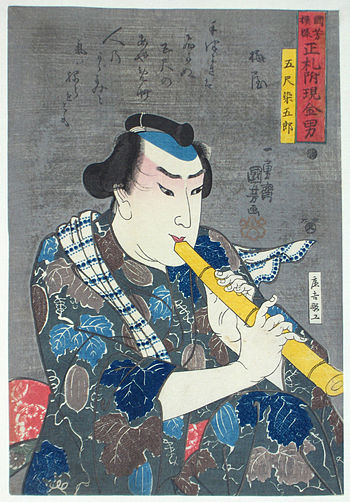 |
| Philharmonic Orchestra of Jalisco (Guadalajara, Jalisco, Mexico) (Photo credit: Wikipedia) |
The word Orchestra comes from ancient Greek. It originally meant the semi-circular space in front of the stage in a theatre where the chorus in a Greek play danced or sang. Later, at the beginning of the seventeenth century when the first Italian Operas were performed, a small group of musicians accompanied the singers and were seated in a similar space in front of the stage. And so the word Orchestra came to mean a body of musicians.
There are various types of orchestras. The group size may be large or small and a conductor usually directs them.
Large orchestras of around one hundred musicians are seen in most large cities and perform in a variety of settings. They are often called:
1. Symphony Orchestra because of the symphonies they play which require a large number of musicians. They also play a wide range of other music.
2. Philharmonic Orchestra which means 'loving harmony of music"
Smaller Orchestras come in varying types and styles and include the following:
1. Chamber Orchestra: This orchestra usually consists of about twenty players who can comfortably perform in a large room of a mansion, hence the name. music performed consists of works from the eighteenth century eg from Bach and Mozart, and also more modern works.
2. Small Orchestra: This orchestra is slightly larger than the chamber orchestra and plays more modern works.
3. Theatre Orchestras: These orchestras accompany musical theatre, opera, ballets and can consist of up to sixty players.
4. String Orchestra: This orchestra consists of around twenty string instrumentalists only. Music played is classical and modern.
5. Jazz and Concert Orchestras which play and record light music.
It is interesting to note that a group of wind instrumentalists playing together is usually called a Band eg Symphonic Band
So what are the instruments of a typical Symphony Orchestra?
There are four main groups of instruments which play in a symphony orchestra.
String Instruments take up about two thirds or three-quarters of the entire orchestra. They consist of around 32 violins ( first and second ), 12 violas, 10 cellos and 8 double basses plus one or two harps.
Woodwind Instruments consist of flutes, clarinets, oboes, and bassoons. There are usually around 2 to 4 players of each of these instruments. One player from each instrument type may double up to a higher or lower version of that instrument eg flute players double up with a piccolo which is a shorter, higher flute.
Brass Instruments consist of trumpets, horns, trombones, tuba(s) and sometimes a cornet. The numbers vary depending on the work performed. Some modern works can use 6 trumpets, 8 horns, 4 trombones and 2or 3 tubas.
Percussion Instruments consist of 4 to 5 players. The instruments are varied and are shaken, rubbed or struck Examples used in a symphony orchestra are the timpani, tam-tam, cymbals, triangle, tambourines and various kinds of drums.
Where do these instrumentalists sit?
A typical symphony orchestra has a seating plan in the shape of a semi-circle ( from the original meaning of Orchestra ) with a conductor in the middle front on a raised stand. The layout can vary according to the conductor used.
The violins sit to the left of the conductor in order of first violins near stage edge and second violins next to the firsts. the cellos (stage edge ) and violas sit to the right of the conductor, with the double basses behind. The woodwinds sit in the middle with the flutes ( front ) and clarinets ( back ) to the left and oboes ( front ) and bassoons ( back ) to the right. The brass sits behind the woodwinds. And the percussion sit at the back of the orchestra
What does the Conductor do?
The conductor directs the orchestra with use of a baton and their arms. They indicate to the musicians all sorts of things like music speed, rhythm, an expression like loud and soft playing and bringing in the instrumentalists at the correct place. In rehearsal, they correct musicians on these aspects. The principal violin, who is the leader of the orchestra, is responsible for the discipline of musicians during rehearsal.
As you can see, there are a variety of orchestras which have varying numbers of people and instruments. A symphony orchestra is just one type of orchestra and consists of a large number of string, woodwind, brass and percussion players. Orchestras usually have a conductor who directs the musicians and gives the music spark.
Are you an orchestral player and need to update your instrument? Or maybe you want to learn an orchestral instrument. Take a look here. Are you interested in sheet music? Take a look here. Article Source: EzineArticles |













